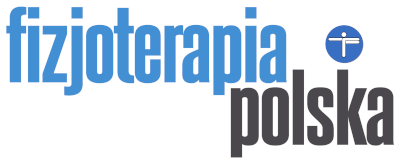Effects of prenatal stress on infant motor development
Martyna Franecka, Małgorzata Domagalska-Szopa, Andrzej Szopa
Martyna Franecka, Małgorzata Domagalska-Szopa, Andrzej Szopa –Effects of prenatal stress on infant motor development. Fizjoterapia Polska 2023; 23(5); 327-338
DOI: https://doi.org/10.56984/8ZG20BiRS
Abstract
Introduction. The study aimed to investigate the correlation between prenatal maternal stress (PMS) experienced by women during pregnancy and perinatal risk factors and infant motor development, as assessed by the Alberta Infant Motor Scale (AIMS).
Aim of the study It was hypothesised that infants born to mothers who experienced PMS have lower levels of motor development during their first year of life compared to infants of mothers who did not experience PMS.
Material and methodology. The test was conducted on 171 women and their 179 children. The subjects were divided into two groups: 1) mothers who experienced PMS and 2) mothers who did not experience PMS. The same key was applied to divide the study infants into two subgroups: 1) infants of women experiencing PMS and 2) infants of women not experiencing PMS. Each infant was assessed using the standardised AIMS tool.
Results. The study results suggest that infants of mothers experiencing PMS score lower on neurodevelopmental assessments, persisting at least 12 months after birth, than infants of mothers not experiencing PMS. Moreover, a correlation was demonstrated between stress during pregnancy and factors such as gestational age, mode of delivery, birth weight, and Apgar scores.
Conclusions. Stress experienced by mothers during pregnancy can affect motor development in infancy. Also, perinatal factors such as the week and type of labour, birth weight, and Apgar score should not be underestimated.
Key words:
prenatal maternal stress, infant motor development
| Pobierz/Download/下載/Cкачиваете | Pobierz bezpłatnie artykuł w j. angielskim |

